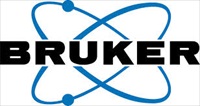Members Login

Channels
Special Offers & Promotions
Bruker Introduces Four Next-Generation Preclinical Imaging Systems at WMIC 2015
New Breakthrough PET/CT and PET/MRI Systems Change Performance Paradigm
 Bruker today introduces four important new preclinical imaging systems at the World Molecular Imaging Congress 2015 in Honolulu, Hawaii. The novel products launched at WMIC each deliver improved performance and convenience for routine imaging, and open new horizons for advanced translational research, while Bruker’s platform philosophy facilitates multimodal imaging projects. Researchers will gain a more complete picture and deeper insights into the causes, progression, potential diagnosis and treatment of disease, accelerating the translation of preclinical results to clinical progress.
Bruker today introduces four important new preclinical imaging systems at the World Molecular Imaging Congress 2015 in Honolulu, Hawaii. The novel products launched at WMIC each deliver improved performance and convenience for routine imaging, and open new horizons for advanced translational research, while Bruker’s platform philosophy facilitates multimodal imaging projects. Researchers will gain a more complete picture and deeper insights into the causes, progression, potential diagnosis and treatment of disease, accelerating the translation of preclinical results to clinical progress.
Next-Generation Albira™ Si PET/SPECT/CT System
A revolutionary and proprietary gridless PET detector architecture, which is also available for Bruker’s new PET/MRI systems, makes the Albira Si the most advanced and highest performance preclinical PET system on the market. It delivers, for the first time, sub-millimeter spatial resolution across the full radial field of view (FOV), increasing the high-resolution FOV by an order of magnitude compared to traditional PET systems. This breakthrough capability, combined with exceptional count rate performance and outstanding PET sensitivity, makes Albira Si the preferred system for dynamic and gated PET in vivo studies.
The Albira Si offers all benefits of integration with SPECT and CT. The micro-CT provides anatomical reference images and attenuation corrections for PET and SPECT imaging. In addition, the Albira Si is compatible with Bruker’s Multimodal Animal Beds for cross-platform MRI and optical molecular imaging.
Professor Jose Benlloch, Director of the Institute for Instrumentation in Molecular Imaging (I3M) at the Polytechnical University of Valencia in Spain, explained: “The new Silicon PM detector technology has major advantages in providing better PET position, energy and timing resolution, and it is compatible with MRI. An additional significant benefit of our unique, continuous crystals technology pioneered at I3M, is the greatly enhanced DOI detection for highest resolution across the entire field of view, which is very beneficial for virtually all preclinical PET applications.”
New BioSpec® 3T Preclinical MRI System with Superior Cryogen-free Magnet
The new BioSpec 3T features breakthrough cryogen-free magnet technology that overcomes the reliability limitations of older cryogen-free magnets that quench within minutes after power outages or cooling water failures. The BioSpec 3T will remain at field 25x-100x longer after a disruption. Cryo-cooler maintenance can conveniently be done at field by Bruker’s magnet service engineers.
The BioSpec 3T features an 18 cm magnet bore, and is upgradable to PET/MRI. Adding Bruker’s proprietary MRI CyroProbe™ for mice and rats, MRI sensitivity and spatial resolution can optionally be increased to be comparable to conventional 7T MRI. The new ParaVision 6 software features validated in vivo protocols, and an easy-to-use preclinical user interface that unifies workflows across different modalities, with facile multi-modality image fusion.
Next-Generation PET/MRI System
Combining the breakthrough Albira Si PET detector technology with superior MRI soft tissue contrast are now offered in the new BioSpec 3T PET/MRI, in one compact instrument. Built-in Multimodal Animal Beds are fully compatible with other Bruker molecular imaging systems. Other PET/MRI combinations may be available upon request.
New, High-Sensitivity Xtreme II Optical Molecular Imaging System
The integration of a new CCD camera brings a new level of sensitivity, speed and versatility. By deeper cooling of the camera and low noise electronics, new levels of performance during low-light applications, such as bioluminescence and Cerenkov imaging, can now be achieved.
Versatility is maintained with five imaging modalities provided as standard within the Xtreme II, allowing for co-registration of molecular events with access to bioluminescence, multispectral VIS-NIR fluorescence, unique direct radioisotopic imaging, and Cerenkov radiation. A high speed digital X-ray scanner with industry-leading resolution and reflectance modes enhance the optical functional images with morphological features.
Dr. Wulf Jung, President of Bruker’s Preclinical Imaging Division, commented: “At WMIC 2015, Bruker is demonstrating clear performance leadership in preclinical PET/CT and PET/MRI, and we are pleased to respond to our customers’ demand for a translational research 3 Tesla preclinical MRI with robust cryogen-free magnet technology. Our optical molecular imaging capabilities have also been further enhanced to meet customer expectations.”
Media Partners


